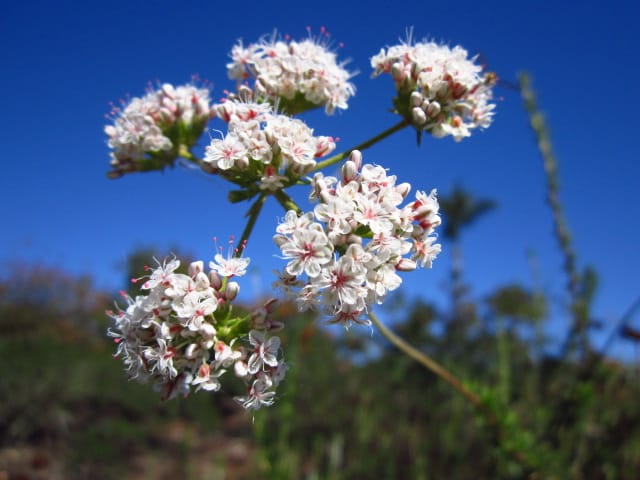The APHIS 2011/2012 Honey Bee Pest and Disease Survey report This report details the result of a year long, 35 state honey bee survey that, as a primary goal, looked for invasive species such as the parasitic mite, Tropilaelaps spp., the Asian honey bee, A. cerana and Slow Paralysis virus (SPV), not known to be in the US at this time. Further honey bee health data were collected and will be added to the Bee Informed Partnership database to help interpret ongoing and future epidemiological studies. This report and previous year reports are available at http://www.aphis.usda.gov/plant_health/plant_pest_info/honey_bees/index.shtml
Blog
Dissection Experiment
In December I was asked to visit our diagnostic lab at the University of Maryland to check on the status of a stereo-scope that will be utilized at the vanEngelsdorp Lab for a variety of applications related to honey bee research. The microscope was previously housed at our office in Oroville, CA (Butte County Cooperative Extension 2279B Del Oro Ave.) Because the scope was being under-utilized by members of our team the decision was made to ship it to the University of Maryland where it would be used for things like honey bee necropsies and tracheal mite testing by students and our diagnostic team. One…
Preparing frames for foundation
In the next few months beekeepers all over the country will start to inspect hives if they haven’t already. Some pests can be destructive over the fall and winter months. There are two common pests that cause damage during this time, mice and wax moths. Both pests cost beekeepers valuable time in fixing the problem and also money to replace the foundation if the frame is salvageable. Below is a video of me using my modified hive tool to clean foundation from top and bottom bars on frames. For more information on my modified hive tool, visit my blog "here". . I have included some…
Flora at Joshua Tree National Park
Some of my favorite memories of the great outdoors in 2012 include sunny days spent in Joshua Tree National Park last November. Having never been, I was amazed at the diversity of plants to be seen. Situated in both the Mojave and Colorado Deserts, the park has a multitude of cacti and shrubs as well as some junipers and oaks at higher elevations. The desert shrubs have really grown on me as, in addition to their varied appearances and the stunning habitats in which they are found, they also have excellent names. For example, Ocotillo, the common name for Fouquieria splendens, just rolls off the tongue.…
Undergraduate Research in the vanEngelsdorp Lab
On December 7th, the undergraduates conducting research in the vanEngelsdorp lab at the University of Maryland gave their final project presentations. The samples our undergrad team analyzed came from a study performed by Jeff Pettis of the USDA Bee Research Lab. The study was based on 6 different apiaries in North Dakota looking to see how differences in surrounding land types would affect the overall health of colonies. Three yards were in heavily agricultural areas, while the other three were surrounded by diverse plant species. One interesting outcome of this study documented that the amount of pollen collected from the more diverse apiary environments was…
A Protocol for Processing North Dakota Pollen Samples by Andrew Garavito
One of our undergraduate students, Andrew Garavito, spent some time up close and personel with pollen. I invite you to read his blog about his experience... The first time I opened a beehive was during the summer of 2011. Since that day, I took any opportunity I could to help with the honey bees at the Central Maryland Research and Education Center (CMREC) Beltsville facility. I conducted hive maintenance and assisted with a few in-hive studies. After two summers of field work with the hives at the University of Maryland’s CMREC, I moved towards the lab side of things when I started working in the…
Queen Pheromones
A queen secretes her own combination of chemical scents, like a perfume. The queen's scent gives the worker bees cues about the hive and the condition of the queen. The scent helps control swarming, it inhibits the development of ovaries in the worker bees, it tells the workers if a queen is mated or not, and it gives workers the cue to gather around the queen and form a retinue to take care of her. The stronger the queen's chemical cue, the larger then retinue should be. A smelly queen could indicate a healthier queens, and therefore a healthier hive. We got an opportunity to…
Nectar, Pollen and Pollen Substitute: Keys to a healthy colonly
In this blog I will talk about nectar, pollen and my theories on how honey bees utilize pollen/substitute patties and dry pollen substitute. So why do honey bees collect pollen? It would be hard to ask this question without asking why they collect nectar. Honey bees collect nectar from the nectaries of plants, which are glands that produce nectar. A honey bee uses her proboscis (mouthparts) to lap up nectar from flowers. There are some flowers in which the bee’s proboscis is not long enough to extract nectar, one example is the honey suckle flower. With this flower, bumblebees will chew a hole in the…
National Survey for Honey Bee Pests and Diseases in California
This Fall I had the opportunity to conduct the National Survey for Honey Bee Pests and Diseases with Katie Lee in Southern California. The main goal of this survey is to confirm the absence, or presence, of pests and diseases that are exotic, or not introduced at present, to honey bees in the United States. Exotic threats that are of the greatest concern to beekeeping in the U.S. are Apis cerana, Slow Paralysis Virus and the parasitic mites of the Genus Tropilaelaps which includes four known species, Tropilaelaps clareae, T. koenigerum, T. thaii and T. mercedesae. For more information on Tropilaelaps spp. and their life-cycle refer to Jennie Stitzinger's…
Toyon
I am continuously impressed with the seemingly endless wealth of knowledge beekeepers accumulate over the years. Whether that knowledge is passed down from generation to generation, a product of their own curiosity, or a combination of both; a successful beekeeper, more often than not, possesses a fundamental knowledge of the topography of the land on which they keep their bees. Topography and climate generally go hand in hand and studying the distinctive characteristics of both can help to determine the most ideal places to locate your bee yards. The location of bee yards strongly influences management strategies, techniques, and decisions. For this reason beekeepers are…

